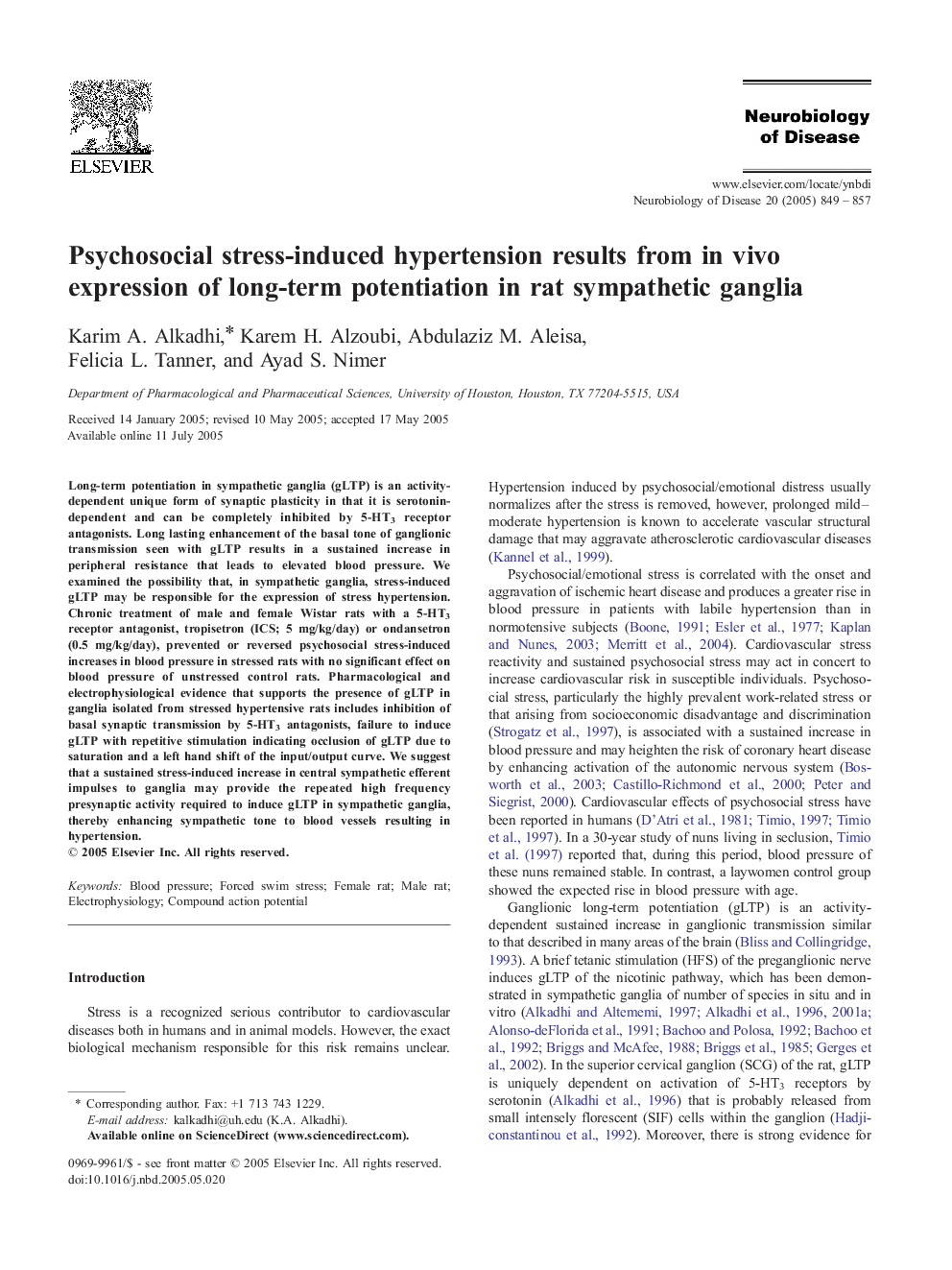| Article ID | Journal | Published Year | Pages | File Type |
|---|---|---|---|---|
| 9989564 | Neurobiology of Disease | 2005 | 9 Pages |
Abstract
Long-term potentiation in sympathetic ganglia (gLTP) is an activity-dependent unique form of synaptic plasticity in that it is serotonin-dependent and can be completely inhibited by 5-HT3 receptor antagonists. Long lasting enhancement of the basal tone of ganglionic transmission seen with gLTP results in a sustained increase in peripheral resistance that leads to elevated blood pressure. We examined the possibility that, in sympathetic ganglia, stress-induced gLTP may be responsible for the expression of stress hypertension. Chronic treatment of male and female Wistar rats with a 5-HT3 receptor antagonist, tropisetron (ICS; 5 mg/kg/day) or ondansetron (0.5 mg/kg/day), prevented or reversed psychosocial stress-induced increases in blood pressure in stressed rats with no significant effect on blood pressure of unstressed control rats. Pharmacological and electrophysiological evidence that supports the presence of gLTP in ganglia isolated from stressed hypertensive rats includes inhibition of basal synaptic transmission by 5-HT3 antagonists, failure to induce gLTP with repetitive stimulation indicating occlusion of gLTP due to saturation and a left hand shift of the input/output curve. We suggest that a sustained stress-induced increase in central sympathetic efferent impulses to ganglia may provide the repeated high frequency presynaptic activity required to induce gLTP in sympathetic ganglia, thereby enhancing sympathetic tone to blood vessels resulting in hypertension.
Keywords
Related Topics
Life Sciences
Neuroscience
Neurology
Authors
Karim A. Alkadhi, Karem H. Alzoubi, Abdulaziz M. Aleisa, Felicia L. Tanner, Ayad S. Nimer,
